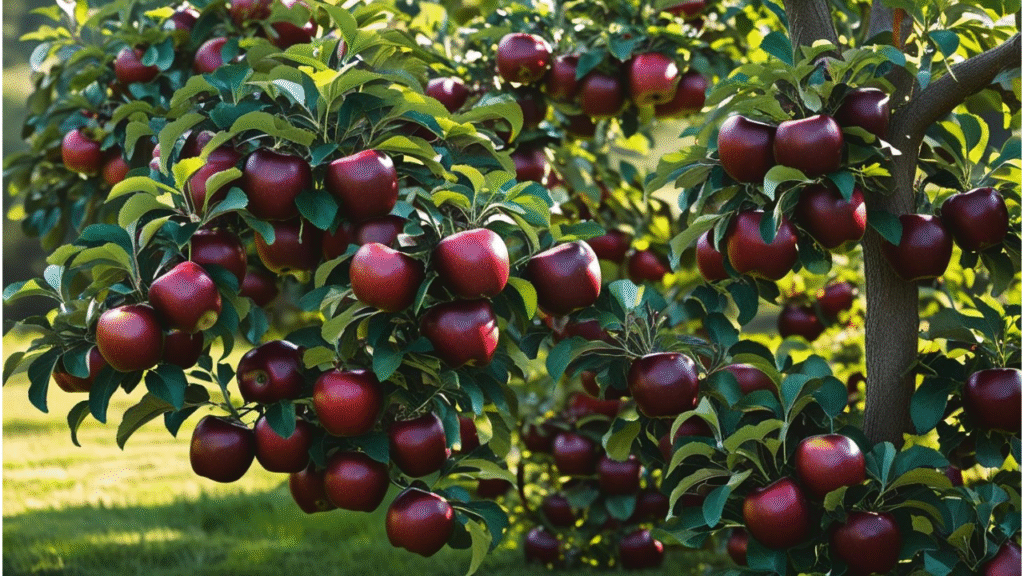
How to Grow and Care for Your Arkansas Black Apple Tree: A Step-by-Step Guide to Success
Imagine stepping into your backyard and picking fresh, homegrown apples from your very own tree 🍏. The Arkansas Black apple tree offers you just that — a stunning, high-yielding tree that produces dark, crisp apples with a flavor that improves with age. But what if you’re unsure where to start or feel overwhelmed by the care required to grow this unique variety? Don’t worry — you’re not alone.
Growing an Arkansas Black apple tree can be a rewarding and fulfilling experience, especially if you’re a beginner gardener. However, many people struggle with getting the tree to thrive due to common mistakes in planting, care, or pest management. In this step-by-step guide, we’ll walk you through everything you need to know to successfully grow and maintain a healthy Arkansas Black apple tree. Whether you’re growing it for the first time or looking to improve your tree’s health, you’ll find the actionable tips and expert advice you need to ensure your success. Ready to turn your gardening dreams into reality? Let’s dive in! 🌳
Table of Contents
Toggle🏡🌳 Understanding the Arkansas Black Apple Tree 🍏🌱
The Arkansas Black apple tree 🍏🌳 is not just any ordinary apple tree — it’s a unique and prized variety known for its deep red, almost black apples. These apples are not only delicious but also long-lasting, making them perfect for both fresh eating 🍎 and storage 🏡. But before you plant this beauty in your backyard, let’s dive into what makes this tree special and why it’s a great choice for gardeners 🌱.
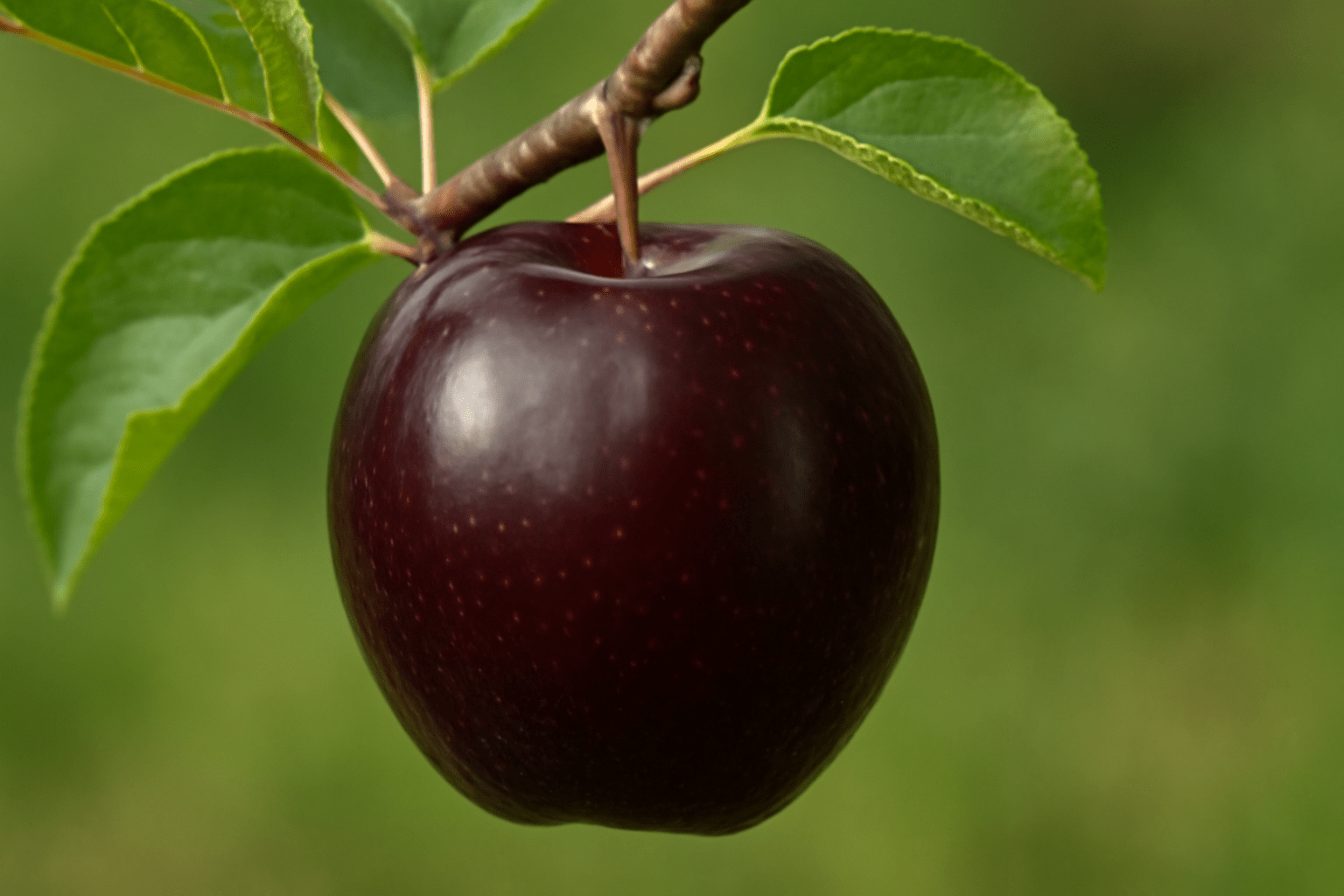
🌿 What Makes the Arkansas Black Apple Tree Special? 🍏
Originating from the Ozarks of Arkansas 🌄, this apple variety stands out for its dark skin and firm, tart flesh that sweetens as it ages 🍏. It has a reputation for being hardy and easy to grow 🌱, making it an excellent option for home orchards and gardens 🏡.
Flavor Profile: Tart when fresh 🍏, these apples mellow into a sweet, complex flavor with a rich, slightly spicy undertone as they age 🌟.
Storage: One of its standout features is its incredible shelf life ⏳. Unlike many apple varieties that spoil quickly 🍎, Arkansas Black apples can last months if stored properly 🏠, making them ideal for long-term enjoyment 🍏.
🌞 Ideal Growing Conditions for the Arkansas Black Apple Tree 🌱
The Arkansas Black apple tree 🌳 thrives in areas with distinct seasons 🌦, making it perfect for cooler climates (Zones 5-8) 🌍. Here’s what you need to know to ensure success 🌱:
Sunlight: Full sunlight ☀️ is crucial. Your tree should receive at least 6-8 hours of sunlight each day 🌞 to ensure healthy growth and fruit production 🍏.
Soil: Well-drained, slightly acidic soil 🌱 works best. It’s important to avoid heavy clay soils, as they can lead to root rot 💧.
Space: Make sure you plant your tree in a location that allows it to spread 🌳. Arkansas Black trees can grow quite large 🌳, so choose a spot that provides enough space for the tree to mature properly 🌿.

🌳 Why Choose the Arkansas Black Apple Tree? 🍏
Not only is this tree visually stunning 😍 with its deep, dark fruits 🍏, but it’s also practical and rewarding for gardeners of all levels 👩🌾. Here’s why it’s a top pick 🌟:
Resilience: Arkansas Black trees are hardy 🌱 and resilient, with a strong resistance to pests 🐞 and diseases 🦠. This means less maintenance for you 🌿.
Longevity: These trees can live for decades 🕰️ if properly cared for, providing you with years of homegrown apples 🍏.
Late Harvest: Unlike many apple varieties, Arkansas Black apples ripen late in the season 🍁, often in late fall 🍂 or early winter ❄️. This makes them perfect for extending the apple harvest season 🍏.
Now that you know why the Arkansas Black apple tree 🌳 is such a fantastic option for your garden 🏡, it’s time to get into the nitty-gritty of planting 🌱 and care 🌿. Stay tuned for more tips in the following sections! 🍏
🌿🍏 Planting Your Arkansas Black Apple Tree 🌳🍏
Planting an Arkansas Black apple tree 🍏🌳 is a straightforward process, but getting it right from the start can make all the difference for your tree’s growth 🌱 and future fruit production 🍎. Here’s how you can plant your tree successfully, ensuring it thrives for years to come! 🌿
🌞 Choose the Perfect Location 🌞
Before you dig into the soil 🌍, picking the right spot is crucial for your Arkansas Black apple tree’s success 🍏. Here’s what to look for:
Sunlight: Choose a sunny spot 🌞 that gets 6–8 hours of direct sunlight each day. This is essential for healthy growth 🌱 and fruit development 🍏.
Space: Ensure your tree has room to grow 🌳. Arkansas Black trees can reach 12–15 feet tall and wide, so avoid planting it too close to buildings or other trees 🏢🌳.
Soil: Well-draining soil is key! Aim for slightly acidic, loamy soil with a pH between 6.0 and 6.5 🌿. If your soil is heavy clay, consider amending it with compost to improve drainage and aeration 🌱.
🕳️ Prepare the Planting Hole 🕳️
Once you’ve found the ideal location 📍, it’s time to prepare the planting hole 🌱. Here’s how to do it:
Dig a Hole: Dig a hole that’s about 2–3 times the width of the tree’s root ball 🌳 and the same depth. This allows the roots to spread easily and establish themselves quickly 🌱.
Loosen the Soil: Use a garden fork or shovel 🧑🌾 to loosen the soil at the bottom of the hole. This helps the roots grow deep into the ground with ease 🪴.
Check for Drainage: Make sure the hole drains properly 🌊. You can check by filling it with water 💧 and letting it drain. If it takes too long, consider adding sand or organic matter to improve drainage 🌾.
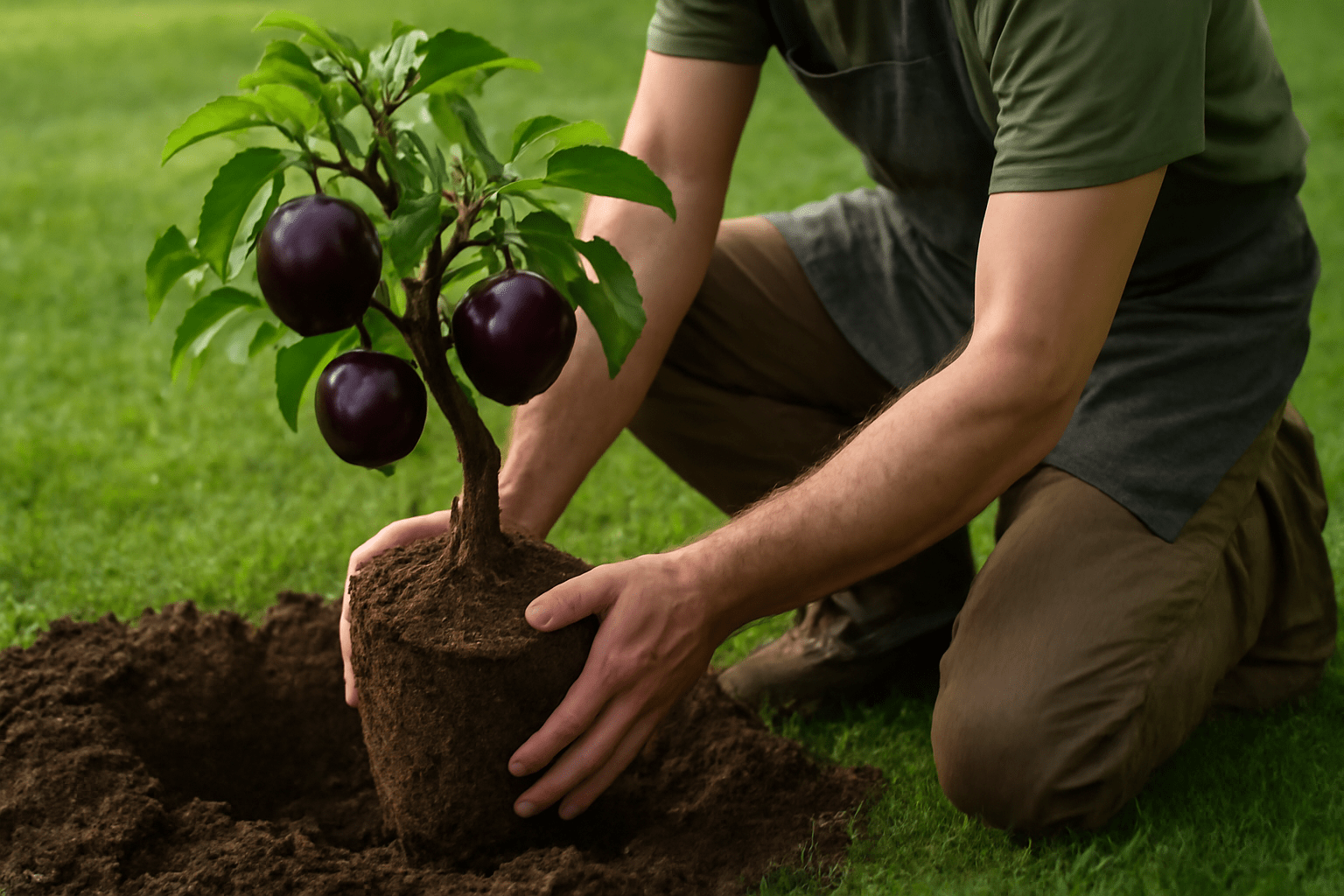
🌱 Planting the Tree 🌱
Now that your hole is ready, it’s time to plant the Arkansas Black apple tree 🌳! Follow these steps for best results:
Place the Tree: Gently remove the tree from its pot or container 🌿 and place it in the hole. Position it so that the root flare (where the roots meet the trunk) is level with or slightly above the soil surface 🌱. This prevents the tree from sitting too deep in the ground, which can lead to root rot 🍏.
Fill the Hole: Backfill the hole with the soil you dug out, making sure to eliminate any air pockets around the roots 🌳. Gently tamp the soil as you go, but don’t compact it too tightly 💪.
Watering: After planting, water the tree deeply 🌧️ to settle the soil around the roots. This also helps eliminate any remaining air pockets 🌱.
🛡️ Mulch and Care After Planting 🛡️
Mulching 🌿 is one of the easiest ways to protect your Arkansas Black apple tree after planting 🍏.
Add Mulch: Spread a 2–3 inch layer of organic mulch (such as wood chips or bark) around the base of the tree 🌳, keeping it away from the trunk. Mulch helps retain moisture 💧, keeps weeds at bay 🌾, and regulates soil temperature 🌡️.
Watering: Keep the tree well-watered 💦 during its first year as it establishes its roots. Ensure the soil remains moist but not waterlogged, especially during dry periods 🌞.
🕰️ Best Time to Plant 🕰️
The best time to plant an Arkansas Black apple tree 🌳 is in early spring 🌸, just after the last frost ❄️, or in fall 🍂, about 6 weeks before the first expected frost 🌬️. This gives the tree time to establish itself before winter or the hot summer months ☀️.
By following these simple steps 🌱, your Arkansas Black apple tree will have the best start possible 🍏. With the right planting location and proper care 🌳, it will grow strong and healthy, ready to reward you with delicious apples 🍎 in no time! 🌿
🌿🍏 Caring for Your Arkansas Black Apple Tree 🌳🍏
Now that your Arkansas Black apple tree is planted 🌱, it’s time to focus on keeping it healthy and thriving 🌳. Proper care ensures the tree produces delicious fruit 🍏 and grows strong year after year. Here’s everything you need to know about watering 💧, fertilizing 🌿, and pruning ✂️ to keep your tree in top condition.
💧 Watering: Keeping Your Tree Hydrated 💧
Watering 💦 is one of the most important aspects of tree care 🌳. While the Arkansas Black apple tree is relatively drought-tolerant once established 🌱, it needs consistent watering during its early years to encourage strong root development and healthy growth.
Watering Schedule: Water deeply once a week during dry spells. Aim to keep the soil consistently moist but not soggy. During hotter months, you may need to water more frequently, especially if the soil dries out quickly. 🌞
Deep Watering: Water the tree deeply 🌊 to encourage the roots to grow deep into the soil. Shallow watering only encourages surface roots, which can lead to instability and poor growth. 🍏
Signs of Overwatering: If your tree’s leaves are yellowing or turning brown at the edges 🍂, it could be a sign of overwatering. Ensure the soil drains well and that you’re not watering too frequently. 🌱
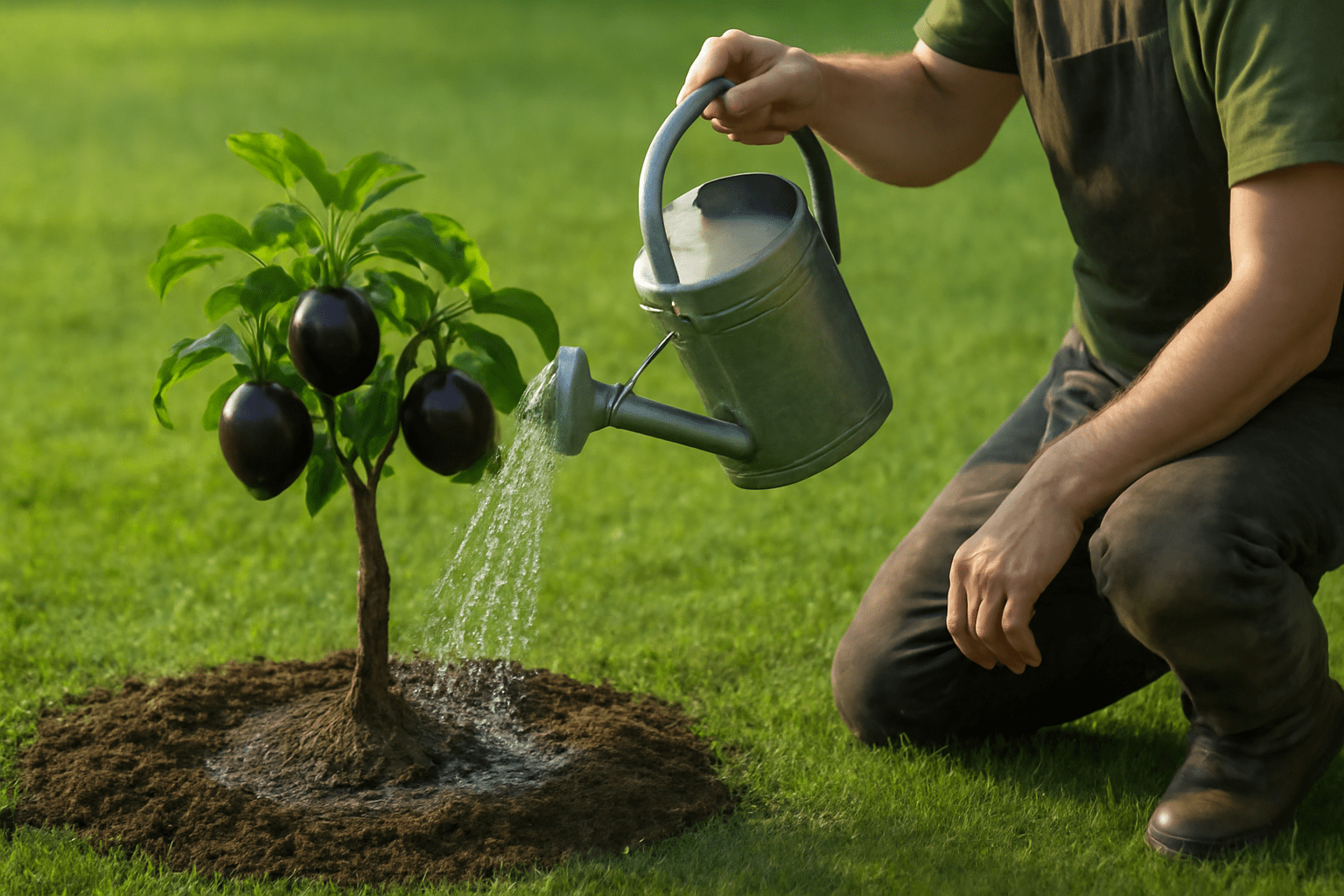
🌿 Fertilizing: Nourishing Your Tree 🌿
Fertilization 🌾 helps your Arkansas Black apple tree get the nutrients it needs for strong growth and abundant fruit production 🍏. However, too much fertilizer can harm the tree, so it’s important to get it right!
Organic Fertilizer: Use a balanced organic fertilizer 🌿, like compost or well-rotted manure, for the healthiest growth. Alternatively, a slow-release nitrogen-based fertilizer works well for apple trees. 🌱
Feeding Schedule:
- Spring and Summer: Apply fertilizer once a month to support active growth 🌳.
- Fall: Reduce feeding to every two months 🍂, as the tree enters a dormant period.
Avoid Over-fertilizing: Too much fertilizer can lead to excessive leaf growth at the expense of fruit production 🍏. Stick to the recommended dosage and avoid fertilizing late in the growing season to prevent encouraging tender growth that might not survive winter ❄️.
✂️ Pruning: Shaping Your Tree for Success ✂️
Pruning ✂️ is essential for maintaining the shape and structure of your Arkansas Black apple tree 🍏, promoting airflow 🌬️, and improving fruit production 🍎. Proper pruning helps the tree grow stronger and more productive.
When to Prune: The best time to prune your apple tree 🍏 is in late winter or early spring before new growth starts 🌱. This way, the tree can recover quickly and put its energy into healthy spring growth 🌿.
How to Prune:
- Remove Dead or Diseased Wood: Start by cutting away any dead, diseased, or broken branches 🪓. These can attract pests and disease, so it’s important to remove them right away.
- Thinning for Airflow: Remove any branches that are crossing or growing inward toward the center 🌿. This allows better airflow 🌬️, reduces disease risk, and gives the remaining branches room to grow.
- Shape the Tree: Use the central leader method (keeping one main trunk) to create a strong, upright tree structure 🌳. Aim for 3–5 evenly spaced lateral branches growing at a 45-degree angle to the trunk.
🌿 Mulching: Protecting Your Tree’s Roots 🌿
Mulch 🍂 is a simple but effective way to keep your Arkansas Black apple tree healthy 🌳. It helps retain moisture 💧, suppresses weeds 🌾, and protects the roots from temperature extremes 🌡️.
Apply Mulch: Spread a 2–3 inch layer of organic mulch, such as wood chips or bark 🌿, around the base of the tree. Keep it away from the trunk to avoid rot 🪴.
Replenish Mulch: Refresh the mulch every year 🌱, as it breaks down over time. Be sure to keep the mulch layer intact but not too thick, as excessive mulch can trap too much moisture and harm the tree 🌳.
🍏 Encouraging Fruit Production 🍏
The Arkansas Black apple tree is a late-season producer 🍏, so patience is key when waiting for fruit. Here are a few tips to encourage healthy fruit production 🍎:
Cross-Pollination: Although Arkansas Black trees are self-pollinating 🌸, planting a second apple tree nearby 🍏 can improve fruit yield. Trees like the Gravenstein or Fuji 🍎 make great pollinators.
Thinning Fruit: When the apples start to form 🌱, thin them out to allow the remaining fruit to grow larger and healthier 🍏. Aim for about 6–8 inches of space between each apple on the branch 🍎.
By following these simple care tips 🌿, your Arkansas Black apple tree 🍏 will thrive, producing a bountiful harvest 🌳 of delicious, dark apples year after year. Remember, consistency is key 🌱, so be sure to stay on top of watering, fertilizing, pruning, and mulching! 🌳🍏
🌿🍏 Managing Pests and Diseases 🌳🍏
Even the hardiest of trees like the Arkansas Black apple tree can face challenges from pests and diseases. Keeping your tree healthy requires regular care and vigilance to prevent issues before they arise. Here’s how you can effectively manage common pests and diseases that could affect your apple tree 🍏.
🐞 Common Pests to Watch Out For 🐞
Pests can wreak havoc on your tree if left unchecked, but with a little attention, you can protect your Arkansas Black apple tree from damage. Here are the most common pests you might encounter:
Apple Maggots: These pests burrow into apples and cause them to rot. Prevent them by hanging sticky traps near your tree during the growing season 🍎. If you spot any infected fruit, remove it immediately to prevent the maggots from spreading.
Codling Moths: These moths lay eggs on your apple tree, and their larvae eat through the fruit. To prevent codling moths, use pheromone traps to disrupt their mating cycle or apply organic insecticides like neem oil 🌱.
Aphids: Small, green or black insects that suck sap from your tree’s leaves, causing stunted growth and curling. Use insecticidal soap or introduce natural predators, like ladybugs, to control aphid populations 🐞.
Japanese Beetles: These shiny, metallic green beetles feed on apple tree leaves and can damage young trees. Hand-pick beetles off your tree or use a neem oil solution to control them naturally 🌿.
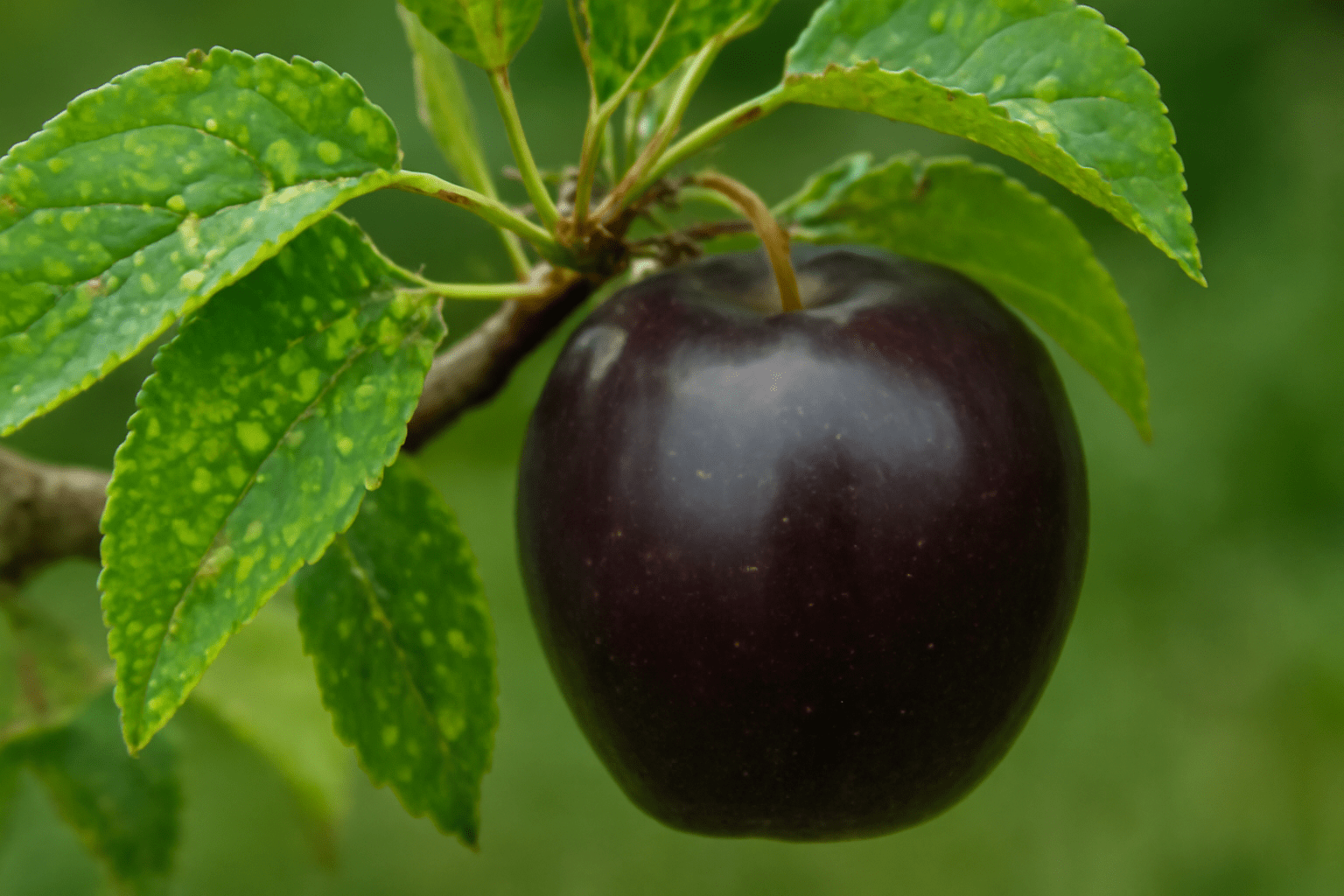
🦠 Dealing with Apple Tree Diseases 🦠
Apple trees are susceptible to several diseases, but with early detection and proper treatment, you can keep your Arkansas Black apple tree healthy. Here’s how to handle the most common issues:
Apple Scab: This fungal disease causes dark, scabby lesions on the leaves and fruit. Prevent apple scab by selecting resistant varieties (like the Arkansas Black), removing fallen leaves in the fall, and applying fungicides during the growing season 🍏.
Powdery Mildew: This fungus creates a white, powdery coating on leaves, causing them to curl and become discolored. To manage powdery mildew, prune affected leaves, improve airflow around the tree, and treat with organic fungicides or a baking soda solution 🌿.
Fire Blight: Fire blight is a bacterial infection that causes branches to wither and blacken. Prune infected branches immediately and sterilize your tools between cuts. Prevent further spread by avoiding excessive nitrogen fertilization and ensuring proper airflow around the tree 🌱.
Root Rot: Poor drainage can lead to root rot, which causes yellowing leaves and wilting. Ensure your tree is planted in well-drained soil and avoid overwatering, which can lead to root rot in both young and mature trees 🌳.
🌱 Preventive Measures: Keeping Your Tree Healthy 🌱
The best way to manage pests and diseases is to prevent them in the first place. Here are a few proactive steps to ensure your Arkansas Black apple tree stays healthy:
Regular Inspections: Check your tree’s leaves, branches, and fruit regularly for signs of pests or diseases. Early detection is key to preventing the spread of an issue 🧐.
Proper Pruning: Prune your tree to ensure good airflow and reduce the likelihood of fungal infections. Remove any dead, diseased, or damaged branches to keep your tree healthy ✂️.
Sanitation: Clean up fallen leaves and fruit around the base of your tree to eliminate the breeding ground for pests and pathogens 🧹. In the fall, remove any infected fruit and leaves to reduce the chances of reinfection next year.
Use Organic Treatments: Whenever possible, opt for organic pest control methods like neem oil, insecticidal soap, or natural predators (ladybugs for aphids, for example). These treatments are effective and safe for your tree, the environment, and beneficial insects 🦋.
🛡️ Protecting Your Tree from Future Pests and Diseases 🛡️
By staying vigilant and maintaining a regular care routine, you can minimize the risk of pest infestations and disease. Healthy trees are more resilient, so make sure to provide the right growing conditions—good soil, consistent watering, and regular pruning. Additionally, make your tree even more resistant by planting compatible companion plants around it to deter pests naturally 🌱.
With these pest and disease management tips, your Arkansas Black apple tree will remain strong, healthy, and productive, delivering a bountiful harvest year after year 🍏. Stay on top of regular inspections and proactive treatments to ensure your tree remains free from harm.
🌿🍏 Harvesting Your Arkansas Black Apples 🌳🍏
After months of care and attention, the time has finally come to enjoy the fruits of your labor! Harvesting your Arkansas Black apples is an exciting moment, but timing and technique are crucial for ensuring the best flavor and storage. Here’s everything you need to know to harvest your apples at the right time and preserve them for future enjoyment.
🍏 When to Harvest Your Arkansas Black Apples
Timing is everything when it comes to harvesting apples, especially for a variety like the Arkansas Black apple tree, which ripens later in the season. Here’s how to know when your apples are ready for picking:
- Look for the Color: Arkansas Black apples turn a deep, almost black hue when they are fully ripe. This variety is known for its dark skin, and when it’s at peak ripeness, the color will be rich and even 🍏.
- Check Firmness: Gently squeeze the apple — it should feel firm but yield slightly to pressure. If it’s too soft, it might be overripe, and if it’s too hard, it may need more time to mature.
- Taste Test: For the most accurate determination, try one of your apples! Arkansas Black apples are tart when freshly picked, but they sweeten over time. If it tastes too sour, give it more time to mature on the tree. If it’s nicely sweet and firm, it’s ready to be picked 🍎.
- Harvest Window: Arkansas Black apples typically ripen in late fall to early winter, depending on your growing zone. In most regions, the best time to harvest is between late October and early December, after the first frost.

🍏 How to Harvest Your Arkansas Black Apples
Once you’ve confirmed that your apples are ready, it’s time to harvest them carefully. Follow these simple steps to ensure you get the best fruit without damaging the tree:
- Use Gentle Handling: When picking apples, twist them gently while holding the stem to avoid bruising the fruit. Avoid pulling or yanking the apples, as this can damage the tree and the fruit.
- Harvest in the Morning: The best time to pick apples is in the morning, after the dew has dried but before the afternoon heat. This helps the apples stay firm and reduces the chances of bruising 🌞.
- Use Clean, Sharp Tools: If your apples are high up in the tree, use a fruit picker or clean, sharp pruning shears to clip the stems. Be careful not to damage the branches or the tree’s bark while harvesting 🍃.
🍏 Storing Your Arkansas Black Apples
Once harvested, your Arkansas Black apples can be stored for months, thanks to their long shelf life. Proper storage is key to keeping them fresh and flavorful:
- Cool and Dry Place: Store your apples in a cool, dark location, such as a root cellar or refrigerator. The ideal temperature for storing apples is around 32°F (0°C), which helps preserve their crispness and flavor ❄️.
- Separate Apples: If you have a large harvest, be sure to store apples in a single layer or on a breathable surface like a wooden crate or cardboard box. This allows air circulation and prevents apples from bruising or spoiling.
- Avoid Storing with Other Fruits: Apples release ethylene gas, which can cause other fruits to ripen too quickly. Keep apples separate from other produce to extend their freshness 🍏.
🍏 Enjoying Your Arkansas Black Apples
Once your apples are stored, you can enjoy them in a variety of ways:
- Fresh: Arkansas Black apples are excellent for eating fresh, especially after they’ve been allowed to ripen a little further off the tree. Their sweet-tart flavor makes them a perfect snack 🍎.
- Baking and Cooking: Due to their firm texture, Arkansas Black apples hold up well in pies, crisps, and other baked goods. Their balance of tartness and sweetness makes them an ideal apple for cooking 🍰.
- Cider: These apples are also great for making homemade cider, as their tartness adds a unique flavor to the beverage 🍺.
With these harvesting and storage tips, your Arkansas Black apple tree will reward you with delicious apples that can be enjoyed for months to come. Happy harvesting! 🍏🌳
🌿🍏 Troubleshooting Common Problems 🌳🍏
While your Arkansas Black apple tree is generally a hardy and low-maintenance variety, there are a few common issues that gardeners might encounter along the way. Whether it’s poor fruiting, yellowing leaves, or stunted growth, addressing these problems early on can help your tree thrive. Here’s how to troubleshoot some of the most frequent challenges you may face with your tree.
🍏 Problem 1: Poor Fruit Production
If your Arkansas Black apple tree is growing beautifully but not producing as many apples as you’d hoped, there could be a few reasons behind this:
- Lack of Pollination: Although Arkansas Black apple trees are self-pollinating, they will produce better fruit if cross-pollinated by another apple variety. Consider planting a compatible pollinator, such as a Fuji or Gravenstein tree, nearby to boost fruit production 🌳.
- Too Much Nitrogen: Over-fertilizing your tree with high-nitrogen fertilizers encourages lots of leafy growth but can hinder fruit production. Be sure to use a balanced fertilizer and avoid overdoing it 🍃.
- Tree Age: Young trees typically don’t produce much fruit in their first few years. If your tree is still in its early stages of growth, give it time to mature before expecting a full crop 🌱.
- Pruning Issues: If you’ve pruned incorrectly or haven’t pruned enough, it could impact fruit production. Make sure to prune your tree to allow enough sunlight and airflow to the branches that produce fruit ✂️.
🍏 Problem 2: Yellowing Leaves
Yellowing leaves can indicate a range of issues, from nutrient deficiencies to water stress. Here’s how to troubleshoot:
- Nutrient Deficiency: Yellowing leaves, especially on older branches, can indicate a nitrogen deficiency. Use a balanced fertilizer with micronutrients or organic compost to restore the balance 🍂.
- Overwatering: If the soil around the roots stays too wet for too long, it can cause the roots to suffocate, leading to yellow leaves. Ensure your tree has well-draining soil, and reduce watering if necessary 🌧️.
- Pests or Disease: Aphids, spider mites, or fungal infections can also cause yellowing leaves. Inspect your tree for pests and use organic pest control methods like insecticidal soap or neem oil 🐞.
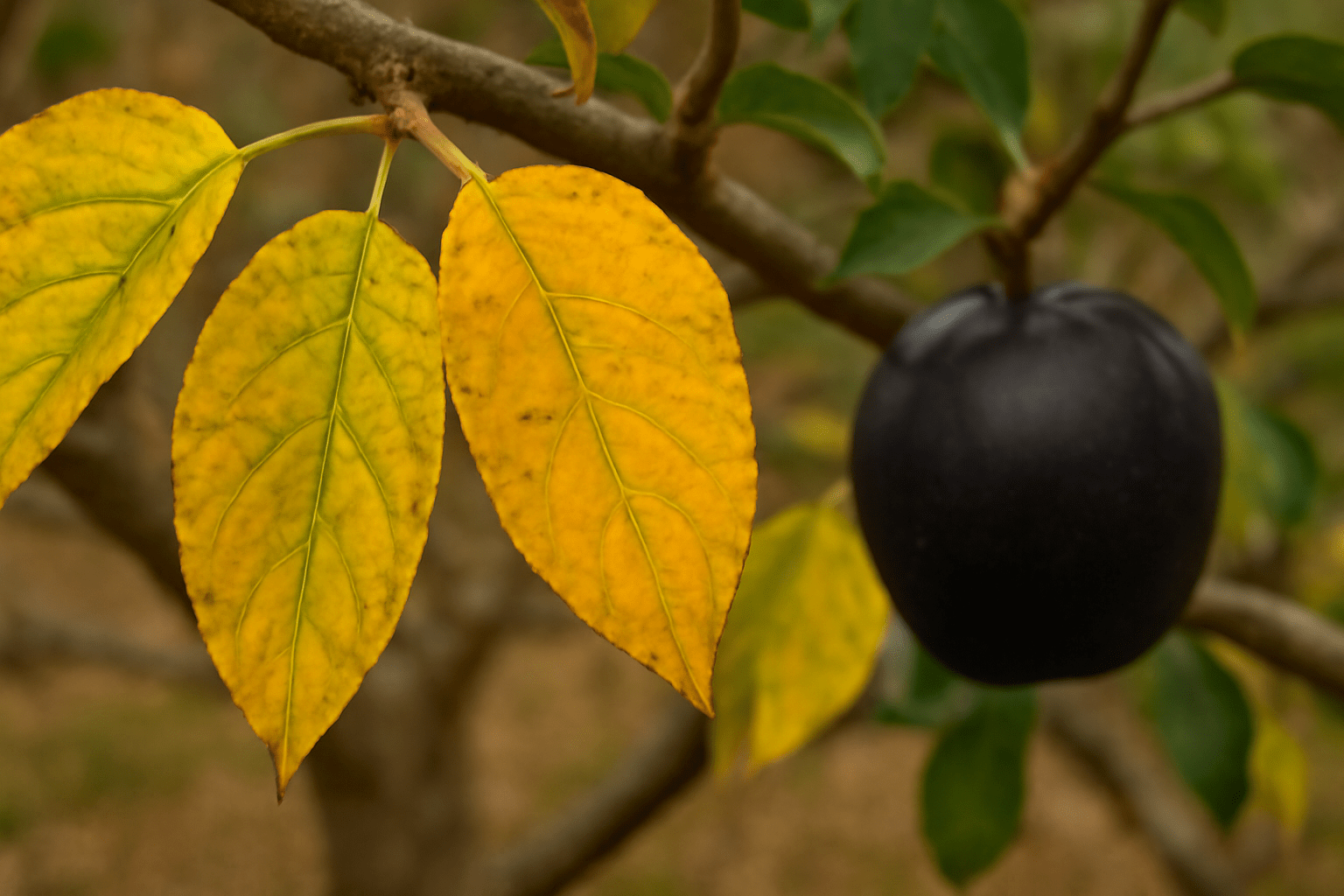
🍏 Problem 3: Stunted Growth
If your Arkansas Black apple tree is not growing as expected or seems to be struggling, here are a few possible causes and solutions:
- Improper Soil Conditions: Poor soil drainage or compacted soil can restrict root growth. Test the soil to ensure it’s well-draining and amend it with organic matter if necessary 🏞️.
- Lack of Sunlight: Apple trees need at least 6-8 hours of direct sunlight to grow properly. Make sure your tree is planted in a sunny location with no shading from nearby buildings or trees 🌞.
- Watering Issues: Both overwatering and underwatering can lead to stunted growth. Check the soil regularly and adjust your watering schedule to keep it consistently moist but not soggy 💧.
🍏 Problem 4: Branches Dying or Withering
If you notice that certain branches are dying, blackening, or wilting, it could be due to a fungal or bacterial infection:
- Fire Blight: This is a common bacterial disease that causes branches to wilt and turn black. To manage fire blight, prune infected branches immediately and sterilize your tools between cuts ✂️.
- Powdery Mildew: A fungal disease that causes white, powdery spots on leaves and stems. If you see signs of powdery mildew, prune affected areas and treat the tree with organic fungicides 🍃.
- Root Rot: Poor drainage can lead to root rot, which weakens the tree and causes branches to wither. Ensure your tree is planted in well-draining soil and avoid overwatering 🌧️.
🍏 Problem 5: Inconsistent or Poor Apple Quality
If your apples aren’t as crisp or sweet as you’d expect, or they are inconsistent in size, here are a few things to check:
- Improper Thinning: Not thinning the apples during the growing season can result in smaller, less-developed fruit. When apples are too crowded on the tree, they compete for nutrients. Thin them out, leaving 6-8 inches between each apple to allow the remaining fruit to grow larger and more flavorful 🍏.
- Water Stress: Inconsistent watering, especially during the fruiting period, can affect apple quality. Make sure the tree gets a consistent amount of water, especially when the apples are maturing 💦.
- Pest Damage: Pests like apple maggots can also affect apple quality by causing them to rot or develop holes. Use pest control measures like traps or organic insecticides to protect the fruit 🍎.
🌱 General Prevention Tips
While you may encounter some of these problems from time to time, regular care and vigilance can help prevent most issues from becoming serious. Here are a few general tips to keep your Arkansas Black apple tree healthy:
- Regular Inspections: Check your tree weekly for signs of pests, disease, or stress. Early detection can save you a lot of time and trouble later.
- Proper Pruning: Keep your tree properly pruned to ensure good airflow and sunlight exposure. This not only helps with fruit production but also reduces the risk of disease.
- Good Soil Practices: Ensure your tree is planted in well-draining soil and avoid compacting the soil around the roots. Healthy soil leads to a healthy tree!
With these troubleshooting tips in mind, you’ll be well-equipped to handle any issues that come your way. Remember, the key to a thriving Arkansas Black apple tree is regular care, attention, and patience. Happy gardening! 🌳🍏
🌿🍏 Final Thoughts 🌳🍏
Growing and caring for your Arkansas Black apple tree is not only rewarding but also brings the joy of fresh, homegrown apples and a lasting sense of accomplishment. By following the steps in this guide—from planting to troubleshooting common problems—you’re setting your tree up for success year after year. Whether you’re a beginner gardener or a seasoned tree grower, the Arkansas Black apple tree’s unique characteristics make it a wonderful addition to any home garden.
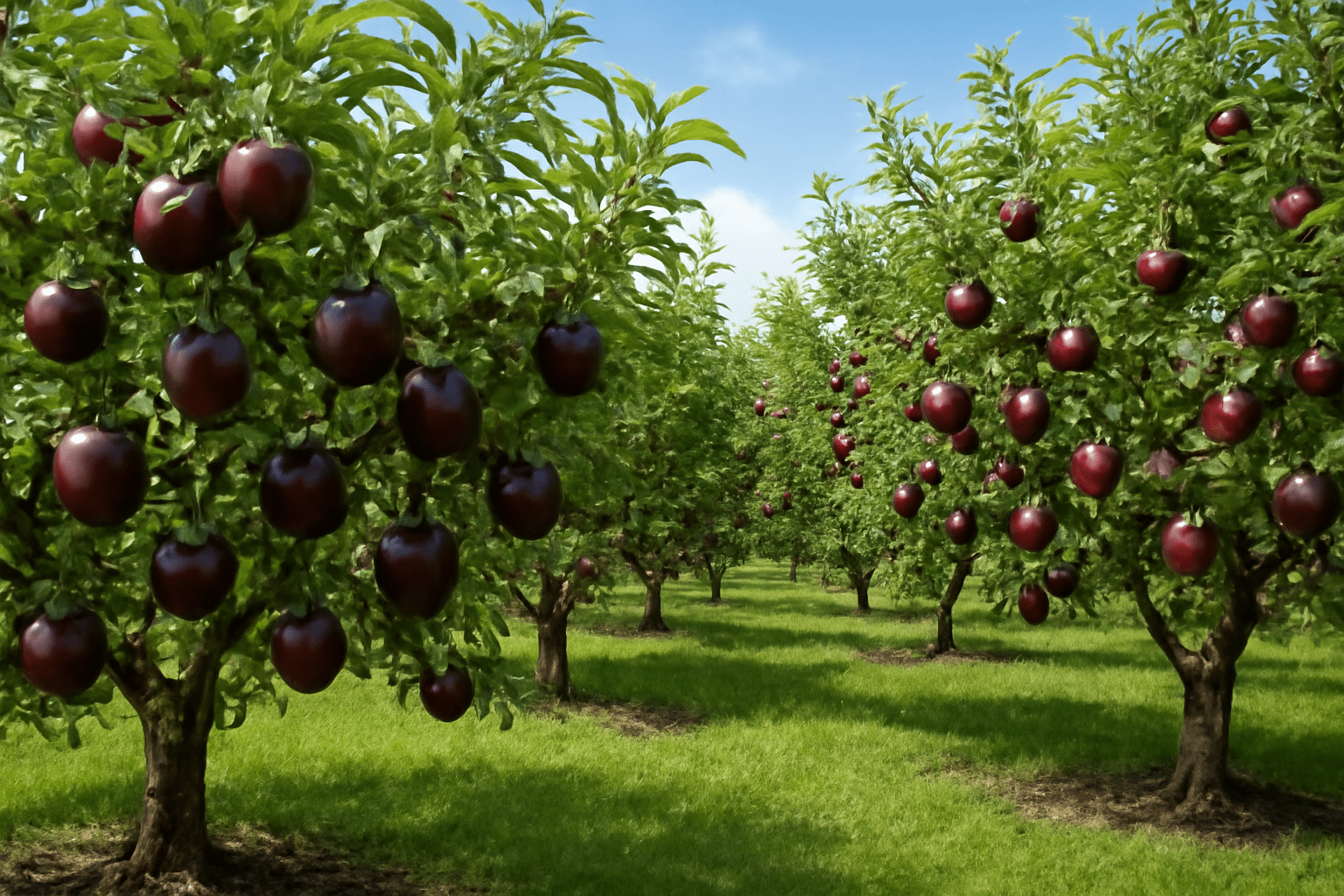
Remember, consistent care is key. Regular watering, proper pruning, effective pest management, and timely harvesting are all essential for keeping your tree healthy and productive. As your apples ripen, you’ll be rewarded not just with delicious fruit, but with the joy of knowing that you nurtured every step of the way 🌳🍏.
So, get planting, take care of your tree, and enjoy the incredible fruits of your labor. Happy gardening! 🌱🍎
Frequently Asked Questions (FAQ)
When is the best time to plant an Arkansas Black apple tree?
The best time to plant your Arkansas Black apple tree is in early spring, after the last frost, or in late fall, about 6 weeks before the first frost. This allows the tree time to establish its roots before the extreme temperatures of summer or winter. Planting in mild weather gives your tree the best start! 🌱
How often should I water my Arkansas Black apple tree?
Water your Arkansas Black apple tree deeply once a week, especially during dry spells. During the growing season, ensure the soil remains moist but not soggy. In winter, reduce watering as the tree’s growth slows down. 💧
Do I need a second tree to pollinate my Arkansas Black apple tree?
While Arkansas Black apple trees are self-pollinating, planting another apple variety nearby will significantly boost fruit yield. Varieties like Gravenstein or Fuji make excellent pollinators. 🍎
Why are the leaves on my Arkansas Black apple tree turning yellow?
Yellowing leaves can be a sign of overwatering, nutrient deficiencies (like nitrogen), or pest issues. Check for poor drainage, adjust your watering schedule, and consider fertilizing with a balanced organic fertilizer to restore nutrients. 🌿
How can I protect my Arkansas Black apple tree from pests?
To protect your Arkansas Black apple tree from pests like aphids and codling moths, use organic insecticides, set up sticky traps, and encourage natural predators like ladybugs. Regularly inspect the tree to catch pest problems early! 🐞
When should I harvest my Arkansas Black apples?
Your Arkansas Black apples are ready to harvest when they have a deep, dark color (almost black), are firm to the touch, and taste slightly tart. Harvesting usually occurs between late October and early December, after the first frost. 🍏
How do I store Arkansas Black apples for long-term use?
To store Arkansas Black apples, place them in a cool, dark place like a root cellar or fridge. Keep them in a single layer to prevent bruising, and avoid storing them with other fruits to prolong their freshness. 🍎
What should I do if my Arkansas Black apple tree isn’t producing fruit?
If your tree isn’t producing fruit, check for poor pollination, excessive nitrogen fertilizer, or the tree’s age (young trees may not fruit immediately). Ensure it’s getting enough sunlight, and consider planting a nearby pollinator to improve yields. 🌳
